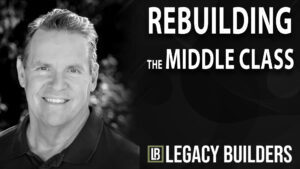Rate Yourself Using Debt-to-income Ratio

Rate Yourself Using Debt-to-income Ratio
By Linda Stern
WASHINGTON (Reuters) – If you were a company, what would the analysts be saying about you?
Most investors use financial ratios to grade the companies the average debt to income ratio by age buy and sell, but they rarely subject their own finances to the same rigorous reviews. Now, an investment adviser has suggested that his clients measure themselves against key ratios, too.
Charles Farrell, a Medina, Ohio, consultant, says that individuals can use these formulas to get a quick report on how they are doing.
“They can serve as an important tool, a guideline, to help convey to individuals how their income, savings and debt are related, and how those ratios must change over time,” he writes in an article in the January issue of the Journal of Financial Planning.
Of course, mortgage lenders have long used ratios to determine whether applicants are credit-worthy. Typically, they like to limit your housing expenses to 28 percent of your gross income, and your total debt payments to no more than 36 percent of your income.
To figure out if you’re within that range, add up what you spend in a month on your mortgage, home insurance and real estate taxes, and divide that figure by your monthly gross income. Your answer should be under .28.
Go back and add in your car payment, credit card payments and other debt payments to the first total, and divide again by your monthly gross salary. The answer should be under .36.
In his article, Farrell takes that formula further. He notes that a financially healthy family or individual will look different at different ages, and adjusts his ratios accordingly.
He based his ideal debt to income ratio formula on the goal of retirement at age 65 and assumes his clients will earn a 5 percent real rate of return on their investments and spend down about 5 percent of their savings every year in retirement.
Here are the numbers he believes healthy families should strive for.
— Savings. Farrell suggests that everyone, at every age, should save 12 percent of their income every year. In his charts and calculations, that figure doesn’t change. But the amount of savings accumulated, relative to household income, does change. He expects a 30-year-old to have 10 percent of their income amassed in savings, including retirement savings and other household savings. By age 35, that should be 90 percent.
Savings amassed at 40, 50 and 60 should be 1.7 times income, 3 times income, and 8.8 times income. Don’t include home equity in your savings for this calculation, unless you are committed to selling your home and moving to a cheaper place when you retire. Farrell assumes that you’ll withdraw 5 percent of your savings every year in retirement; if you’re going to be withdrawing more than that, you’ll have to save even more.
— Debt. Businesses calculate their debt-to-equity ratios by adding up everything they owe in long-term debt, and dividing it by the value of their stock. A healthy debt to income ratio corporate debt/equity ratio is usually between 0.5 and 2, depending on the kind of company it is.
The numbers for individuals and families are similar, but vary by age and use income, instead of equity, as the denominator.
Add up the mortgage, the student loans, the credit card balances and the remaining balance on the car loan. At age 30, you’ll have your highest levels of debt relative to your income, says Farrell. He pegs that number at 1.7, meaning that if you’re earning $50,000 at age 30, you should be $80,000 in debt.
That’s nice in theory, but it’s hard to imagine ever buying a first home without busting through Farrell’s formula.
As people age, they should reduce their debt-to-income ratio by paying down their mortgage and aggressively cutting auto and credit card debt. At age 45, debts should equal your annual salary. By retirement at age 65, those debts should be zero, he suggests.
Not everyone will measure up to his suggested ratios, but then not every company has optimum numbers, either.
The good news, for companies and for people, is that there’s always another quarter ahead for improving financial performance.
Cut debt, increase savings, and give yourself a new report card in April. Moving in the right direction is as important as getting the numbers right in the first place.
Subscribe our YouTube Channel for more updates.
—————————————————————————————————————————————————————————————————————
We hope you found this article about “Rate Yourself Using Debt-to-income Ratio” helpful. If you have questions or need expert tax or family office advice that’s refreshingly objective (we never sell investments), please contact us or visit our Family office page or our website at www.GROCO.com. Unfortunately, we no longer give advice to other tax professionals gratis.
To receive our free newsletter, contact us here.
Subscribe our YouTube Channel for more updates.

Alan Olsen, is the Host of the American Dreams Show and the Managing Partner of GROCO.com. GROCO is a premier family office and tax advisory firm located in the San Francisco Bay area serving clients all over the world.
Alan L. Olsen, CPA, Wikipedia Bio

GROCO.com is a proud sponsor of The American Dreams Show.

The American Dreams show was the brainchild of Alan Olsen, CPA, MBA. It was originally created to fill a specific need; often inexperienced entrepreneurs lacked basic information about raising capital and how to successfully start a business.
Alan sincerely wanted to respond to the many requests from aspiring entrepreneurs asking for the information and introductions they needed. But he had to find a way to help in which his venture capital clients and friends would not mind.
The American Dreams show became the solution, first as a radio show and now with YouTube videos as well. Always respectful of interview guest’s time, he’s able to give access to individuals information and inspiration previously inaccessible to the first-time entrepreneurs who need it most.
They can listen to venture capitalists and successful business people explain first-hand, how they got to where they are, how to start a company, how to overcome challenges, how they see the future evolving, opportunities, work-life balance and so much more..
American Dreams discusses many topics from some of the world’s most successful individuals about their secrets to life’s success. Topics from guest have included:
Creating purpose in life / Building a foundation for their life / Solving problems / Finding fulfillment through philanthropy and service / Becoming self-reliant / Enhancing effective leadership / Balancing family and work…

MyPaths.com (Also sponsored by GROCO) provides free access to content and world-class entrepreneurs, influencers and thought leaders’ personal success stories. To help you find your path in life to true, sustainable success & happiness. It’s mission statement:
In an increasingly complex and difficult world, we hope to help you find your personal path in life and build a strong foundation by learning how others found success and happiness. True and sustainable success and happiness are different for each one of us but possible, often despite significant challenges.
Our mission at MyPaths.com is to provide resources and firsthand accounts of how others found their paths in life, so you can do the same.
Partnerships for Strategic Conservation – Barry Gold
Barry Gold Outlines a Bold Vision for Conservation and Sustainable Development Africa is on the brink of a transformation—one that will define the future of the continent and, ultimately, the planet. With its population projected to double from 1.3 billion today to 2.2 billion by 2050 and reach nearly 4 billion by 2100, the demand…
Restoring Gorongosa National Park
Greg Carr’s Mission to Restore Gorongosa National Park: A Story of Conservation and Community Greg Carr’s journey from a successful technology entrepreneur to a dedicated philanthropist restoring Mozambique’s Gorongosa National Park is nothing short of remarkable. What began as a search for a meaningful way to give back has evolved into one of the most…
The Ownership Revolution: How ESOPs Can Strengthen the Middle Class
The Ownership Revolution: How ESOPs Can Strengthen the Middle Class For decades, the American middle class has been the foundation of economic stability, embodying the aspirations of millions. Yet, as Chester Woolley eloquently highlighted in his recent speech, this once-thriving segment of society is in decline. “The middle class seems to be shrinking. It doesn’t…
Dr. Stel Nikolakakis on The Power of Vision Therapy
Unlocking Potential: The Power of Vision Therapy Vision therapy is emerging as a transformative tool for individuals with learning disabilities, ADHD, concussions, and even high-performance athletes. Dr. Stel Nikolakakis, an optometrist and a pioneer in neuro-visual training, discovered the profound impact of vision therapy through a deeply personal experience—his son’s diagnosis with cerebral palsy. His…



